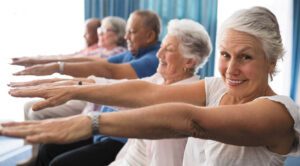 Parkinson’s disease presents unique challenges that extend beyond the characteristic tremors. Patients often experience reduced movement amplitude, slowed movements, and diminished vocal volume—symptoms that can significantly impact quality of life. While dedicated therapeutic approaches exist for each symptom, innovative healthcare teams are finding ways to provide comprehensive care even with limited resources.
Parkinson’s disease presents unique challenges that extend beyond the characteristic tremors. Patients often experience reduced movement amplitude, slowed movements, and diminished vocal volume—symptoms that can significantly impact quality of life. While dedicated therapeutic approaches exist for each symptom, innovative healthcare teams are finding ways to provide comprehensive care even with limited resources.
The Power of LSVT BIG for Movement Rehabilitation
The Lee Silverman Voice Treatment (LSVT) BIG program has emerged as a gold standard intervention for addressing the movement difficulties associated with Parkinson’s disease. This evidence-based approach focuses on amplitude—training patients to make bigger, more deliberate movements to counteract the shrinking motion patterns typical of the disease.
Occupational and physical therapists certified in LSVT BIG guide patients through intensive exercises designed to recalibrate their perception of movement. The program typically includes:
. Large, exaggerated limb and body movements
. High-effort, high-intensity exercises
. Functional movement training applicable to daily activities
. Consistent reinforcement of “Think BIG” as patients move
The effectiveness of LSVT BIG lies in its ability to leverage neuroplasticity—the brain’s capacity to form new neural connections. Through consistent practice of amplified movements, patients can essentially rewire their motor systems to automatically produce larger, more controlled movements in everyday life.
Integrating Vocal Exercises Without a Speech Therapist
While LSVT LOUD is traditionally administered by speech-language pathologists, many facilities face staffing challenges that require adaptation. Forward-thinking OT and PT professionals have found effective ways to incorporate vocal exercises into their treatment sessions, ensuring patients receive comprehensive care.
During LSVT BIG exercises, therapists prompt patients to:
. Count repetitions loudly
. Verbalize movements with strong vocal projection
. Practice sustained “Ahhh” sounds during stretching components
. Use loud voices when describing or planning activities
This integrated approach maintains the crucial focus on vocal amplitude that would otherwise be addressed in formal speech therapy. While not a complete replacement for specialized speech services, these vocal components help prevent the common decline in speech volume and clarity that accompanies Parkinson’s progression.
Creating Synergy Between Movement and Voice
The brilliance of combining vocal exercises with physical movements extends beyond convenience. Research suggests that simultaneous training of both systems creates a synergistic effect, with improvements in one domain supporting enhancements in the other.
When a patient practices large arm swings while counting loudly, they reinforce the core LSVT principle across multiple systems: bigger movements and louder voices. This dual-task approach also challenges cognitive function, providing additional benefits for patients who may experience cognitive changes as their disease progresses.
Practical Implementation in Daily Care
For therapy teams implementing this combined approach, consistency is key. Therapists establish clear cues like “BIG movement, LOUD voice” that patients can remember and apply independently. Take-home exercise programs include reminders about vocal projection, and family members are educated on the importance of encouraging both expanded movements and increased vocal volume.
Documentation of vocal performance, even in OT/PT notes, helps track this aspect of function over time. Simple metrics like the distance at which a patient’s voice can be clearly heard provide valuable information about disease progression and treatment effectiveness.
Beyond the Clinic: Empowering Long-term Success
The ultimate goal of this integrated approach extends beyond clinical improvements. By embedding vocal exercises within physical therapy sessions, patients develop habits that continue in their daily lives. A patient who practices speaking loudly while performing exercises is more likely to maintain appropriate vocal volume when ordering at a restaurant or speaking with grandchildren.
This comprehensive care model represents the evolution of Parkinson’s treatment—recognizing that the most effective interventions address multiple symptoms simultaneously and prepare patients for real-world success beyond the therapy room.
Innovative Therapies Group has certified hand therapists that specialize in specific treatments post ziloflex injections for duptyrens contractions and will help you to regain function post procedure.
Types of Treatment Available with Physical Therapy
. Assessment and Evaluation Programs
. Difficulty Walking
. Fall Prevention and Balance Retraining
. Fitness and Wellness Programs
. Functional Training
. Gait Training and Balance Programs
. Manual and Massage Therapy
. Neurological and Neurodegenerative Retraining
. Vestibular Rehabilitation
Innovative Therapies Group, Inc.
352-433-0091 | innovativetherapiesgroup.com
 Central Florida Health and Wellness Magazine Health and Wellness Articles of the Villages
Central Florida Health and Wellness Magazine Health and Wellness Articles of the Villages



